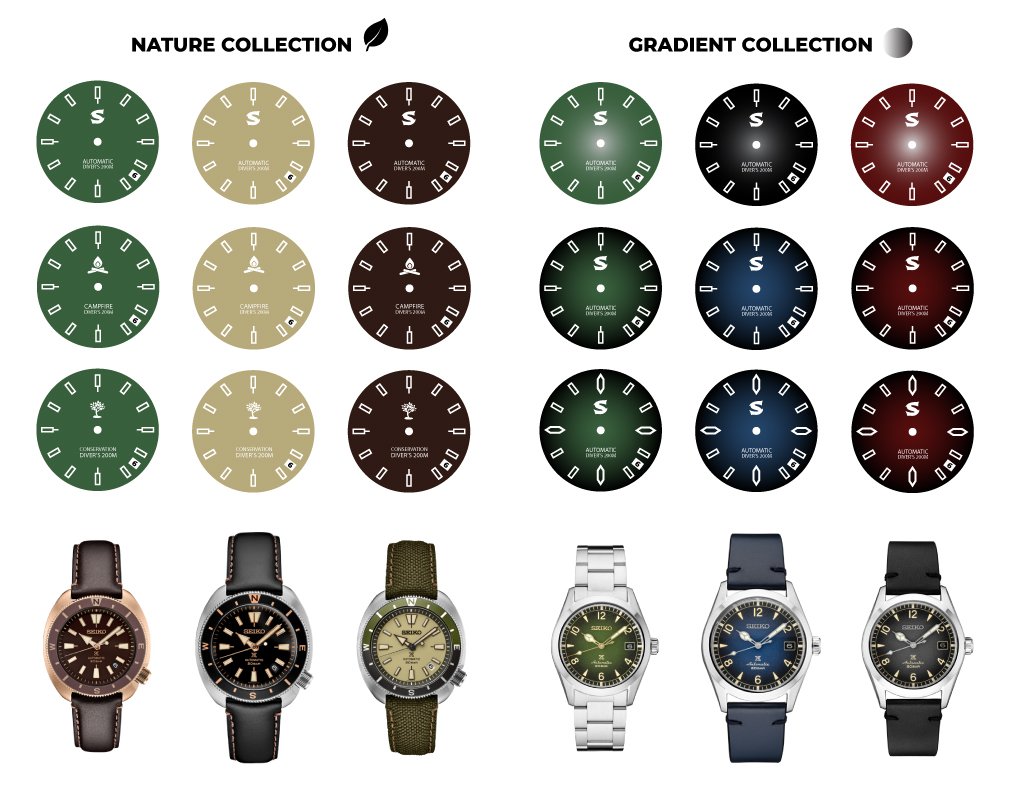Free & Fast USA Shipping Learn More
The Art of Watch Dials: 6 Common Types of Dial Finishes

A dial serves as the face of a watch. Therefore, it is only fitting to treat it as one of the most critical components of the device. Alongside the various forms of movement finishing, watchmakers also pay attention to dial finishings or methods that make them more appealing to people. But what are the most common dial finishes in the long history of watches? Keep reading below to find out.
1. Guilloché
Guilloché may be the most traditional method used in dial finishing. It is the process of using a sharp cutting tool to carve geometric patterns into metal. It involves using a rose engine machine to engrave a precise, repeating pattern on a blank metal sheet. Usually, the designs can become mesmerizing rosettes, basket weave patterns, and diamond “hobnail” shapes.
Also called engine turning, the form of decoration is not solely exclusive to watch dials. However, it dates back to the 16th century, when rose engines were large, expensive, and hand-operated. The technique was deemed ornamental and only for people who were wealthy enough to afford it.
2. Modern Engine Turning
Engine turning saw the demand through the middle of the 20th century. However, the method was almost put to rest in the 1970s during the rise of changing tastes and quartz crisis. Later on, it saw an opportunity to come back in the 1980s to 1990s with practitioners like George Daniels pushing the art form in the modern era.
Today, modern artists are trying to preserve the process of contemporary engine turning. Headed by Josh Shapiro, a watchmaker based in Los Angeles, other watchmakers and artisans see to it that they pass on the technique to the next generation.
3. Common Guilloché Patterns
Besides the classic repetitive patterns, the rose engine turning can also produce a geometric pattern in a circular arrangement. Rather than following a rotating cam rosette to create a geometric pattern, the touch piece follows a pattern bar to engrave the desired design.
Clous de Paris is a diamond pattern or hobnail pattern, which is considered the most common engine turning pattern. Besides that, the design is also the easiest to execute.
4. Frosting
Frosting is another dial finishing technique that draws its roots from Abraham-Louis Breguet, a horologist or someone who studies the measurement of time. At one point, the method was also called “Breguet frosting.” The Prussian innovator would use a pure silver blank to craft dials.
The method is known for removing impurities in the metal. However, Breguet’s way includes heating the materials, causing the impurities to rise to the surface. In effect, it turns black, which will be later on treated with acid to burn off the accumulated impurities.
Nowadays, watchmakers rarely use frosting as it may be damaging for timepieces. Besides, other methods have been developed over the years that are more effective in giving a frosted effect.
5. Hand Hammering
Hand hammering is the method of dial finishing that only requires a hammer, a stake, and a skillful set of hands. By tapping the stake hundreds of times, watchmakers can create a textured surface.
The method is so popular because of the textures it produces. Since a watchmaker creates every single design, it carries a “signature,” irregularities in the spacing and size of the technique. The method exhibits authenticity that you cannot eliminate since it’s a handmade, manual approach.
Conclusion
Dial finishes are both marvels of art and science. The techniques have evolved since the days of Breguet. Today, through watch modding and timepiece enthusiasts, the beauty and complexity of dial finishes pass on to the next generation. As long as every design still captures the attention of artisans and collectors, you can rest assured these techniques and skills will survive for centuries to come.
Crystaltimes USA is America’s #1 choice for Seiko mod parts. As we serve the US, Canada, and Mexico, we offer the largest selection of watch parts and components. Are you new to Crystaltimes USA? Discover what we can offer by visiting our website today.
